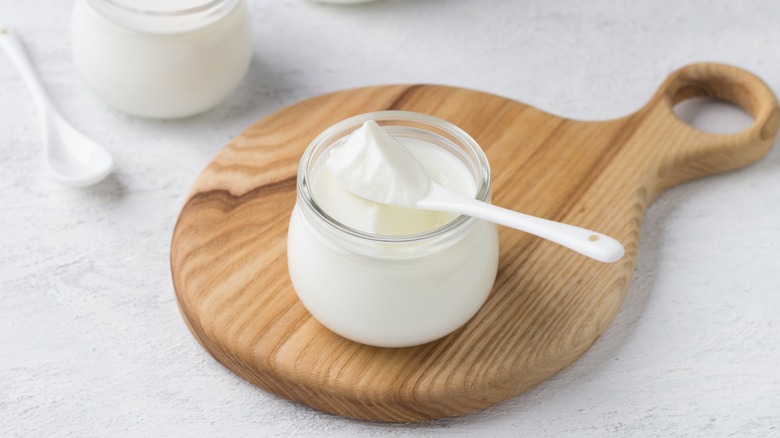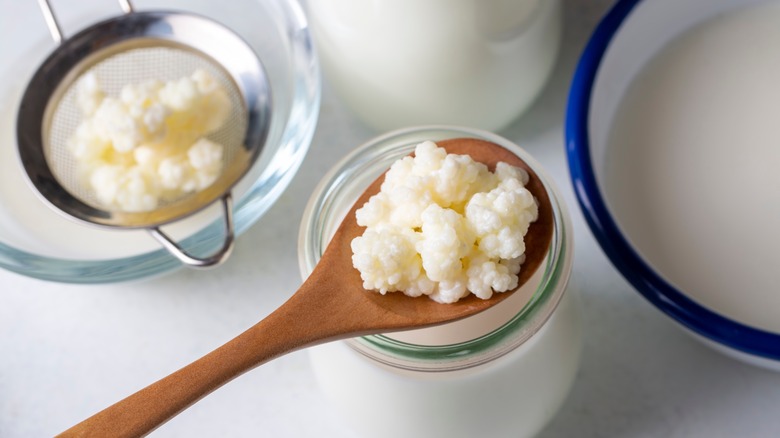The Main Difference Between Kefir Vs Yogurt
You may have strolled the dairy aisle at your local supermarket to find a new kid in town sitting next to the tubs of yogurt: Kefir. Frequently marketed as "drinkable yogurt," kefir is often sold in bottles for that exact reason. Kefir is a liquid milk drink, similar in taste to yogurt but thinner in texture, thereby making it drinkable.
They are two different dairy products entirely, but the main difference between kefir and yogurt is in how they're used. Yogurt is more widely consumed on its own, due to its more creamy texture. It's well known and well used in cuisines worldwide, whether incorporated into other recipes or eaten solo. Kefir, on the other hand, has a liquid texture, making it more frequently consumed as a drink. It can be sipped on its own but is often used in smoothies and other drinks. But if kefir is simply drinkable yogurt, is there much of a difference at all? There are a few more contrasting aspects of these dairy products to pay attention to.
Different characteristics and creation process of kefir and yogurt
While many base characteristics make kefir and yogurt comparable, like their shared main ingredient (dairy), they are not the same thing. Kefir and yogurt have differing textures mainly because of the process the dairy goes through to create these products. Yogurt undergoes a quick fermentation process, where the temperature rises gradually over a short period to create the creamy, lumpier texture yogurt is known for. As for making kefir, kefir grain is added to dairy and fermented in a warm, room-temperature environment, slowing down the process and keeping it in liquid form.
Besides texture, another outcome of these fermentation processes is a difference in taste. Kefir is much tangier than yogurt, offering a slightly sour kick. Because of this extra boost of acidity, kefir works great as a sour cream substitute. You may not find much of a difference in taste to plain yogurt, but yogurt is generally more mild and bland-tasting than the slight zing of kefir. But don't be fooled — just because kefir is fermented doesn't mean it'll be long-lasting like other fermented products. Kefir will stay good after opening for about five days. Yogurt, on the other hand, can last from one to two weeks after opening.
Probiotic culture count: Kefir vs yogurt
If gut health is on your mind, fermented dairy products like kefir and yogurt are likely on your grocery list. But which product offers more probiotics? While probiotic levels can vary from brand to brand, generally speaking, more probiotics can be found in kefir than yogurt. Yogurt is just fermented with bacteria, but kefir has a longer and more complex fermentation process. So when you drink more kefir, you get more gut-pleasing probiotics.
Kefir is higher in probiotic count thanks to the kefir grain added to the dairy during the fermentation process. Kefir isn't much of a typical grain at all, but rather small, white spheres of microorganism-packed goodness. The good-for-you bacteria packed in kefir grain get activated when combined with dairy. The "grain" moniker is due to its shape but has nothing to do with being an actual grain. Both yogurt and kefir can provide beneficial gut bacteria, it all depends on whether you want to drink your probiotics or scoop them with a spoon.


